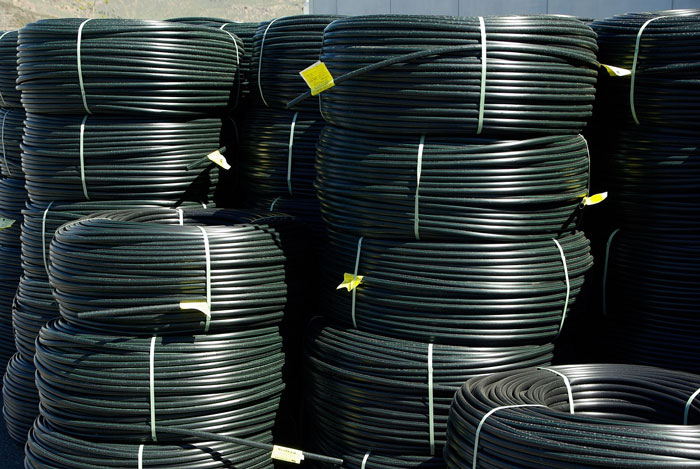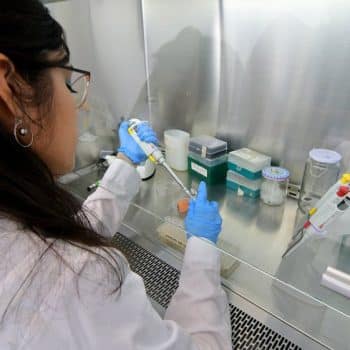
This post provides detailed information on the rubber technologist job description, including the key duties, tasks, and responsibilities that commonly define what they do.
It also highlights the major requirements, including skills, knowledge, and abilities candidates need to fulfill to be hired for the rubber technologist role.
What Does a Rubber Technologist Do?
The rubber technologist is responsible for ensuring the quality, performance, and cost-effectiveness of rubber materials.
According to the Rubber Associates, the duties of a rubber technologist also involves developing important rubber based products that are used daily, including rubber shoes, tires for motor vehicles and bicycles, bands, and other latex substances.
Rubber technologists are the king or queen of quality control with rubber; they make sure things are up-to mark.
As for who they report to, it really varies with the size and structure of the company.
But in most cases, they are under the senior scientist, research manager, or technical director.
And where can you find these rubber masterminds working their magic?
Pretty much any industry that needs rubber goods – automotive (think tires, hoses, seals, gaskets), construction (roofing materials, sealants, insulation), consumer goods manufacturing (footwear, sporting gear, household items), aerospace (seals, gaskets, vibration dampeners), and even research labs dedicated to advancing rubber tech.
When it comes to getting hired as a rubber technologist, most companies are looking for folks with a Bachelor’s or Master’s degree in chemistry, polymer science, materials science, or something along those lines.
But they also really dig candidates who’ve gotten some hands-on experience through internships or jobs in rubber processing or product development. That kind of real-world practice can go a long way.
Oh, and having some fancy certifications from respected organizations like the Rubber Division of the American Chemical Society or the International Institute of Synthetic Rubber Producers can definitely make you look even more legit and knowledgeable in this field.
Those credentials tend to catch employers’ eyes for sure.
The rubber technologist job description usually involves conducting research and developing new rubber formulations and compounds.
It also entails analyzing and testing rubber materials for their performance, durability, and whether the materials meet the industry standard.
Their duties also include optimizing the rubber processing techniques and manufacturing methods.
Rubber technologists work with engineers and product designer to develop rubber base components and products.
They work to ensure quality control and help troubleshoot any production issues.
It is also their responsibilities to provide technical support and train to the production staff.
Overseeing the cost of raw materials and the inventories and preparing technical reports and documentation are also part of the rubber technologist work description.
Rubber technologists are expected to be aware of the latest trends and laws, and whether there are any recent breakthroughs.
They work in teams whenever required by different departments to improve and make a product.
Rubber Technologist Job Description Example/Sample/Template
The job description of a rubber technologist usually consists of the following duties, tasks, and responsibilities:
- Research and experiment with new rubber compounds and exploit their important aspects to make sure they are used properly in making innovative products
- Give ideas and work together with engineers, designers, quality control people and shop floor assistants to develop rubber products
- Conduct analytical testing on manufactured rubber items and raw materials and develop experimental formulations for modifying and improving rubber compounds
- Design and conduct various assessment to ascertain properties of rubber materials and not forget to submit detailed reports of those findings as well as your findings to sales and R&D departments
- Actively participate in quality compliance
- Suggest proper corrective actions
- Maintain and update technical management resources
- Keep in touch with fellow co-workers as well as supports
- Observe the shop floor as a rubber technologist leader to see if the specialists and chemists are running the machines properly or if mixings, milling, extruding, and vulcanization are going on properly or whatever other rubber processing techniques
- Keep on modifying the compositions for each batch. Know how to choose the right raw materials, additives and reinforcing agents in terms of performance and cost while mindful of the environmental impact of rubber products
- Develop or suggest methods to recycle and make use of rubber again and also show no problem with the dedication that is needed for the better performance of rubber and rubber products
- Be a part of the product design review team and work with the engineers to oversee the quality of rubber components to meet reliability and security standards of the final product
- Make and implement plans for recycling and making use of the waste from rubber and other products to achieve more sustainability and make the environment eco-friendly
- Develop and carry out failure analysis and investigation in a bid to identify and solve issues on product defect or present poor performance
- Manage and keep all machines, instruments and lab facilities in good condition ensuring they work properly
- Set and detect various formulas, conditions and materialistic properties of rubber and type classifications in separate databases
- Be a part of the patent research to be aware of the development and improvement of company products and effect, and also present innovative ideas for improvement
- Develop various methods and testing techniques for the improvement of product quality.
Rubber Technologist Job Description for Resume
If you are making a new resume or CV as someone who has worked before as a rubber technologist or are presently working in that role, then you can create a compelling Professional Experience section by applying the above rubber technologist job description example.
You can apply the rubber technologist duties and responsibilities in the above sample job description in making your resume’s Professional Experience section to show that you have been successful performing the role.
This can boost the impact of your resume on the recruiter/employer and increase your chances of being hired, especially if the new position that you are seeking requires someone with some rubber technologist work experience.
Rubber Technologist Requirements: Skills, Knowledge, and Abilities for Career Success
Here are important requirements you may be expected to fulfill to be employed by most recruiters/employers for the rubber technologist role:
- Ability to read and interpret complex technical information and communicate it in a simple and plain format
- Familiarity with statistical analysis and data interpretation techniques
- Excellent written and verbal communication skills
- Ability to present technical information clearly and effectively
- Strong collaboration and teamwork skills
- Active listening and effective questioning abilities
- Interpersonal skills to build and maintain professional relationships
- Ability to manage multiple projects and priorities simultaneously
- Strong time management and organizational skills
- Proficiency in project planning, execution, and documentation
- Ability to work in a team setting and as an individual
- Commitment to ongoing professional development and learning
- Ability to adapt to changing technologies, processes, and industry trends
- Openness to feedback and continuous improvement
- Passion for innovation and mindset for intellectual curiosity
- Familiarity with important industry regulations, best practices, and standards
- Understanding of rubber product applications and market trends
- Knowledge of sustainability initiatives and environmental considerations
- Awareness of health, safety, and environmental regulations
- Understanding of product development lifecycles and commercialization processes
- Ability to evaluate cost-effectiveness and feasibility of rubber formulations and products
- Knowledge of intellectual property protection and patent processes
- Awareness of customer needs and market dynamics
These skills, knowledge, and abilities are essential for rubber technologists to excel in their roles, contribute to product development and innovation, and drive success within their organizations.
Rubber Technologist Salary
The average salary for a rubber technologist in the United States varies across different sources.
According to Glassdoor, the average annual salary is $80,908.
LinkedIn lists over 5,000 job opportunities with 302 new positions daily. While specific state rankings are not provided in the search results, states with significant industrial and manufacturing sectors like Texas, California, Ohio, Michigan, and Illinois are often popular locations for rubber technologist roles due to their strong presence in the rubber industry.
Conclusion
Rubber technologists are the behind-the-scenes professionals of the rubber industry, handling everything from R&D to ensuring top-notch product quality and providing manufacturing support.
Scoring one of these gigs requires a delicate balance of technical expertise, problem-solving prowess, communication skills, and business savvy.
Most rubber technologist positions want at least a Bachelor’s degree in science or engineering.
The job prospects are solid and the pay’s pretty good too, if you’ve what it takes.
Whether you’re looking to break into this specialty field or need to hire some rubber tech talent, this guide has provided in-depth information on the rubber technologist job description that you can use.












